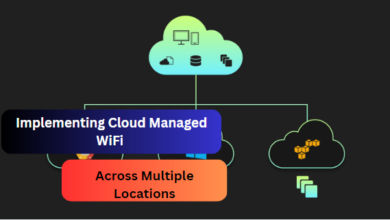Bloatware-Free Bliss: Optimal Performance, No Junk Software

In an era where digital efficiency is paramount, the presence of bloatware on devices has become a significant hindrance to optimal performance. Bloatware refers to unnecessary software pre-installed on a device by manufacturers, which often consumes valuable resources and slows down your system.
This unwelcome software can range from trial versions of programs you’ll never use to obscure apps that serve no purpose but to frustrate with their persistent updates and notifications.
Removing bloatware not only frees up system resources but also paves the way for a cleaner, faster, and more enjoyable user experience. In this comprehensive guide, we’ll explore strategies for achieving a bloatware-free device, ensuring both enhanced performance and a clutter-free software environment.
Understanding the Impact of Bloatware
Bloatware can significantly affect your device’s performance in several ways. It occupies precious disk space, runs unnecessary background processes, and can even compromise your privacy and security. The frustration of dealing with sluggish performance and constant interruptions from unwanted software leads many to seek a bloatware-free existence.
Identifying Bloatware on Your Device
The first step to reclaiming your device’s performance is identifying the bloatware. Look for applications you didn’t install yourself, software that offers limited trial periods, and apps you have no intention of using. Tools like PC Decrapifier for Windows or AppCleaner for macOS can help identify and remove these unwanted guests effectively.
Manual Removal Techniques
While automated tools are helpful, manual removal often provides the most thorough results. Here’s how to manually remove bloatware from various devices:
Windows: Go to the Control Panel, select “Programs and Features,” and carefully sift through the list of installed software. Uninstall any program that you recognize as bloatware. For Windows 10 and later, the Settings app provides a more user-friendly interface for removing unwanted apps.
macOS: Open the Finder, go to the Applications folder, and drag any unwanted software to the Trash. Remember to empty the Trash to complete the removal process.
Android: Navigate to the Settings app, select “Apps” or “Application Manager,” find the bloatware apps, and choose “Uninstall.” For pre-installed apps that can’t be removed, disabling them can prevent them from running.
iOS: Press and hold the app icon until it jiggles, then tap the “X” to delete. For built-in apps that cannot be deleted, you can remove them from the home screen and restrict their background activities in the settings.
For custom gaming PC builders, achieving a bloatware-free system is especially crucial. Gamers prioritize performance, seeking the highest possible frame rates and the smoothest gameplay experience. When building a custom PC, selecting each component with care, the last thing you want is pre-installed software slowing you down. By choosing your operating system wisely and installing only the essential software, you can ensure that your gaming rig runs efficiently.
Furthermore, custom PC builders have the advantage of starting with a clean slate. Unlike off-the-shelf computers, which often come loaded with unnecessary programs, a self-built system can be free of bloatware from day one.
This approach not only maximizes the performance of high-end gaming hardware but also offers a more personalized and clutter-free computing environment.
By carefully selecting each component and software installed on your system, you can achieve an optimized gaming setup that stands out both in performance and reliability.
Advanced Strategies for Stubborn Bloatware
Some bloatware is notoriously difficult to remove, being deeply integrated into the operating system. In such cases, advanced strategies may be necessary:
Rooting or Jailbreaking: For Android and iOS devices, respectively, rooting or jailbreaking can provide deeper access to the system, allowing you to remove otherwise unremovable bloatware. However, this can void warranties and potentially expose your device to security risks.
Reinstalling the Operating System: A clean installation of the operating system on PCs and laptops can eliminate all bloatware, giving you a fresh start. Ensure you back up your data before proceeding.
Using Third-party Firmware: For Android devices, installing custom ROMs can provide a bloatware-free experience. Research and ensure compatibility with your device model before attempting.
The Benefits of a Bloatware-Free Device
The advantages of removing bloatware extend beyond mere performance improvements. Users enjoy increased storage space, longer battery life, and reduced security vulnerabilities. Additionally, a device free of unnecessary software is easier to use and maintain, leading to a more satisfying digital experience.
Maintaining a Bloatware-Free Environment
After achieving a bloatware-free device, maintaining this state is crucial:
Be Selective About Downloads: Only download apps and software you genuinely need and will use.
Regularly Review Installed Software: Periodically check for and remove unused or unnecessary programs.
Opt for Minimalist Installation Options: When installing new software, choose custom installation settings to avoid inadvertently adding unwanted programs.
In conclusion, while bloatware is a common nuisance, the path to a bloatware-free device is well within reach. By taking proactive steps to identify and remove unwanted software, you can unlock the full potential of your device. A bloatware-free device not only performs better but also offers a more secure and enjoyable user experience.




